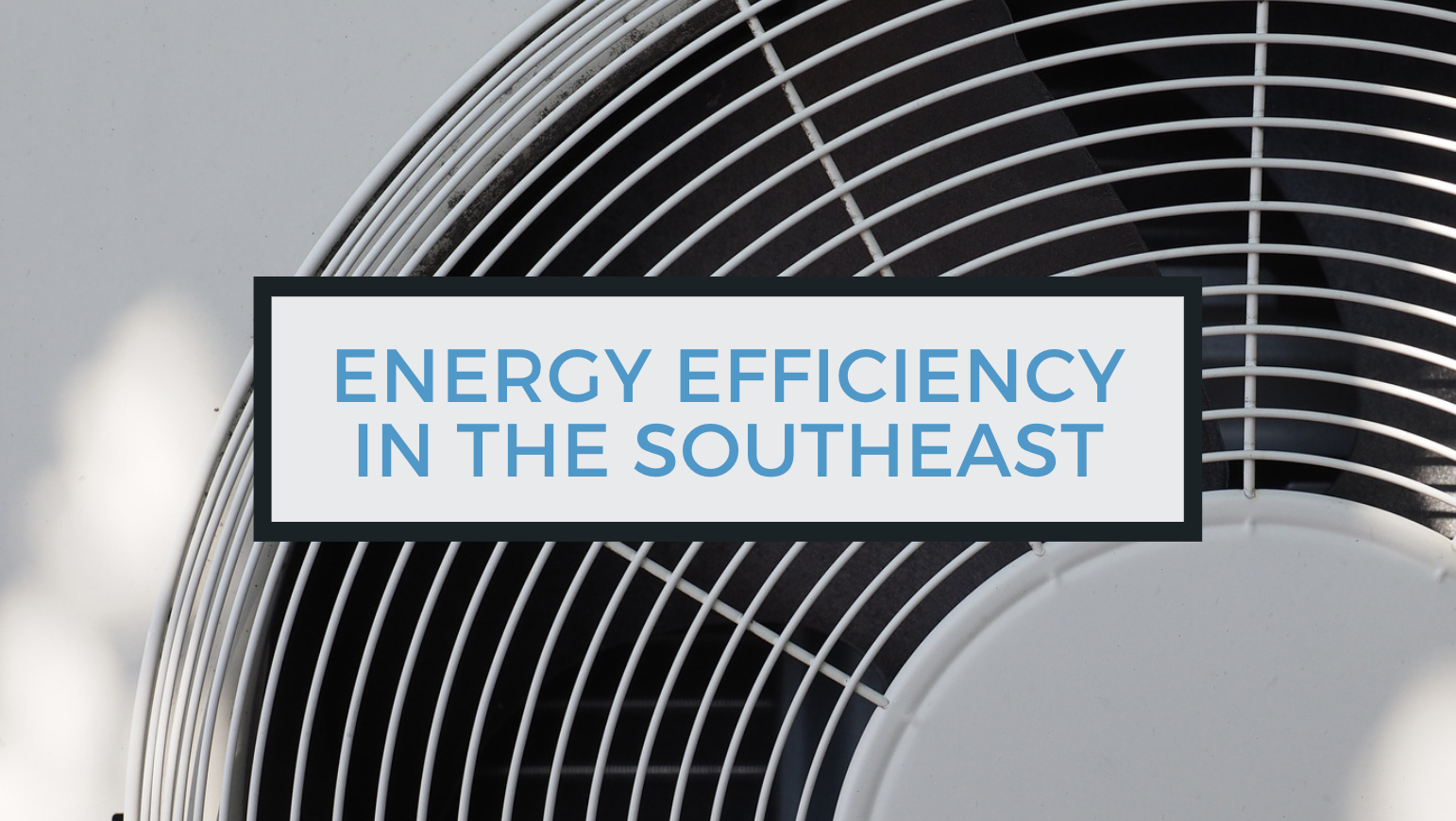Each year SACE compiles efficiency performance data from nearly 500 electric utilities in the Southeast, which we now present in our fourth annual “Energy Efficiency in the Southeast” report.
Our latest report centers on utility efficiency savings from 2020 (the most recent year with complete data) taken as a percent of annual electric retail sales – which creates a standard metric to compare performance between utilities and states of different sizes. Our data findings are presented with both historical context and the most recent policy trends to give a sense of where efficiency savings performance will likely go in the coming years. Our first blog in this series coincided with the release of the fourth annual “Energy Efficiency in the Southeast” report, and our second blog focused on decarbonization. The remaining posts in this series will focus on specific states and utilities in the region, beginning with this one on Dominion Energy South Carolina.
[button color=”blue” url=”https://cleanenergy.org/wp-content/uploads/Energy-Efficiency-in-the-Southeast-Fourth-Annual-Report.pdf”]Download the Report[/button]
[button color=”blue” url=”https://cleanenergy.org/news-and-resources/energy-efficiency-in-the-southeast-fourth-annual-report-webinar/”]Watch the report webinar[/button]
[button color=”blue” url=”https://cleanenergy.org/?s=SEEnergyEfficiencyReport2022″]Read the report blog series[/button]
The state of South Carolina has the second highest annual efficiency performance in the Southeast (behind North Carolina), and Dominion Energy South Carolina (DESC) ranks fourth among its regional utility peers. With efficiency savings at 0.21% of its retail electric sales in 2020, DESC is just above the Southeast regional average. But Southeastern utilities as a whole trail far behind the rest of the nation: while the Southeast regional average is 0.20% annual savings, the national average is 0.72% – meaning that utilities in the rest of the country are delivering more than 3.5 times higher efficiency savings than both DESC and the Southeast region as a whole. Underlying this regional data are differences and deficiencies in policy that consistently lead to poor performance among Southeastern utilities. Recently, however, there have been notable advances in South Carolina that could lead to increased efficiency saving in the future, though this will depend on follow through actions by Dominion and continued oversight by the South Carolina Public Service Commission (PSC).

Efficiency Savings Flat Despite Recent Plans
In 2019, DESC filed a 5-year program plan with double the annual efficiency savings compared to its performance in previous years. But as the Covid-19 pandemic set in and then continued to grind on, it became clear that the utility would not reach its 2020 savings goals, instead achieving 56% of forecasted savings. With the pandemic still lingering throughout 2021, DESC again discontinued in-home programs and it now projects a significant decline in future savings for commercial customers.
The pandemic was an unforeseeable obstacle, but prior to DESC’s acquisition of South Carolina Electric & Gas (SCE&G), the company routinely underperformed with respect to the previous 5-year program plan cycle. Ultimately, responsibility for overseeing and holding Dominion accountable to its efficiency savings targets rests with the South Carolina Public Service Commission.
Policy Changes in South Carolina
There are more changes afoot. In 2020, South Carolina set a new standard for oversight of utility Integrated Resource Planning (IRP) in the Southeast when the PSC rejected Dominion Energy’s IRP. The Commission’s decision was based on five words in South Carolina’s landmark 2019 Energy Freedom Act (EFA), which raised the standard for IRP approvals as “the most reasonable and prudent means of meeting the electrical utility’s energy and capacity needs.” In addition, the PSC issued specific requirements related to another provision of the EFA that stated a utility’s IRP must include an evaluation of low, medium, and high cases for the adoption of renewable energy, energy efficiency, and demand response.
In the short term, this led to DESC increasing its annual efficiency savings target to 1% of annual electric sales. In its next full IRP in 2023, the utility must now include analysis of energy efficiency up to 2% of annual sales – more than six times higher than it has delivered in previous years. Dominion is further expected to ”include potential incentive options and best practices to achieve the modeled level of DSM” (referring to demand-side management).
Because energy efficiency is a least cost energy resource, the new analysis will show how substantially lower energy demand reduces the need for traditional power generation. And to ensure transparency in Dominion’s resource portfolio analysis, the company is being required to provide intervenors, like SACE, access to the company’s resource planning model, which is typically a black box.
Next Steps
There are two stakeholder efforts currently underway related to energy efficiency and DESC’s next IRP. One is occurring through the Dominion Energy Efficiency Advisory Group, which is focused primarily on development of a DSM potential study that will be used when analyzing energy efficiency and demand response resources in the next IRP. The other is the IRP Stakeholder Advisory Group, which is focused on technical aspects related to how modeling software in the next IRP will determine the most affordable energy resources to meet future energy demand.
Underlying these long term resource planning efforts are, quite literally, thousands of individual data assumptions and decisions regarding affecting how the models will run. As important as these complex and voluminous details can be, we can’t lose sight of the big picture. If Dominion’s next IRP meets the standard set by the Energy Future Act requiring “the most reasonable and prudent means of meeting the electrical utility’s energy and capacity needs,” we could finally see a true transition away from over-reliance on fossil fuels and the unfortunate legacy of the VC Summer nuclear power plant towards a shift in favor of building a new clean energy future with (we hope) robust energy efficiency programs that lower electric bills for Dominion’s South Carolina customers.
[button color=”blue” url=”https://cleanenergy.org/wp-content/uploads/Energy-Efficiency-in-the-Southeast-Fourth-Annual-Report.pdf”]Download the Report[/button]
[button color=”blue” url=”https://cleanenergy.org/news-and-resources/energy-efficiency-in-the-southeast-fourth-annual-report-webinar/”]Watch the report webinar[/button]
[button color=”blue” url=”https://cleanenergy.org/?s=SEEnergyEfficiencyReport2022″]Read the report blog series[/button]
#SEEnergyEfficiencyReport2022




